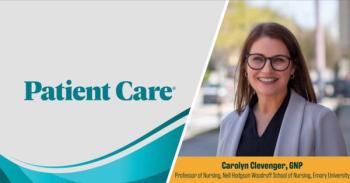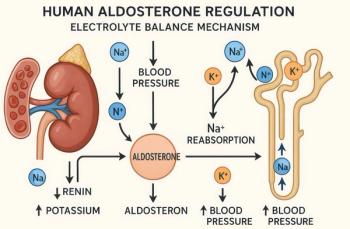
John Anderson, MD on How to Integrate CGM in Primary Care: "Just Do It"
The Frist Clinic clinician said that technical difficulty is not impeding CGM uptake in primary care. "The real limitation is they just haven't done it before."
John E Anderson, MD, practices internal medicine and diabetes at the Frist Clinic, in Nashville, TN. In a recent interview with Patient Care,© Anderson talked about how continuous glucose monitoring has completely changed the nature of diabetes management for both people with diabetes and their clinicians.
The clinical benefits of detailed, real-time glycemic insights far exceed what can be gleaned from traditional HbA1c and finger-stick checks: recent literature shows CGM use in type 2 diabetes is associated with significant reductions in HbA1c (by about -0.40%) and substantial increases in time-in-range when compared to self-monitoring of blood glucose.
Despite this clear efficacy, however, Anderson said the integration of CGM into routine primary care is still somewhat of an uphill climb. Research revealed that between 2020 and 2021, fewer than half (39% to 44%) of primary care clinicians reported ever having prescribed the technology, and this despite the fact that the majority of people with diabetes are treated by frontline clinicians.
In this short video Q&A, Anderson offers a compelling counterpoint to the idea of technical difficulty being the greatest obstacle, suggesting that the "real limitation is they just haven't done it before." He argues that once physicians overcome the initial learning curve, the process becomes intuitive, easier, and more informative than traditional methods:
"I think the real limitation is they just haven't done it before. But let me tell you, it is way easier to use than trying to go through a blood stained little notebook of a bunch of finger stick glucoses from patients who may or may not be recording these accurately. You can learn how to do this... And once you've done it a few times, becomes second nature... you'll have an aha moment after two to three of them."
Anderson explains that interpreting the continuous, visual data, like the ambulatory glucose profile, is ultimately a more sensible and effective way to adjust a patient's treatment plan.
The following transcript has been lightly edited for style.
Patient Care: For family physicians who are more familiar with traditional finger stick monitoring and that data, what is the most challenging aspect of the learning curve when it comes to interpreting CGM data.
John Anderson, MD: I think the real limitation is they just haven't done it before. But let me tell you, it is way easier to use than trying to go through a blood- stained little notebook [full] of a bunch of finger stick glucose [values] from patients who may or may not be recording these accurately. You can learn how to do this. There are a lot of resources out there on websites telling you how to do this, having you walk through the ambulatory glucose profile. And once you've done it a few times, it really does become second nature. And it makes complete sense when you look at midnight to midnight, 6 am, noon, 6pm, and you see the changes throughout the day. You can see the highs and lows. You can see if it's a narrow or a wide variability in the pattern. So you've just got to do it, right? It's just like anything else. Once you've done it, you'll go "Aha!" You'll have an aha moment 2 or 3 of them.
Newsletter
Enhance your clinical practice with the Patient Care newsletter, offering the latest evidence-based guidelines, diagnostic insights, and treatment strategies for primary care physicians.

















































































































































































































































































